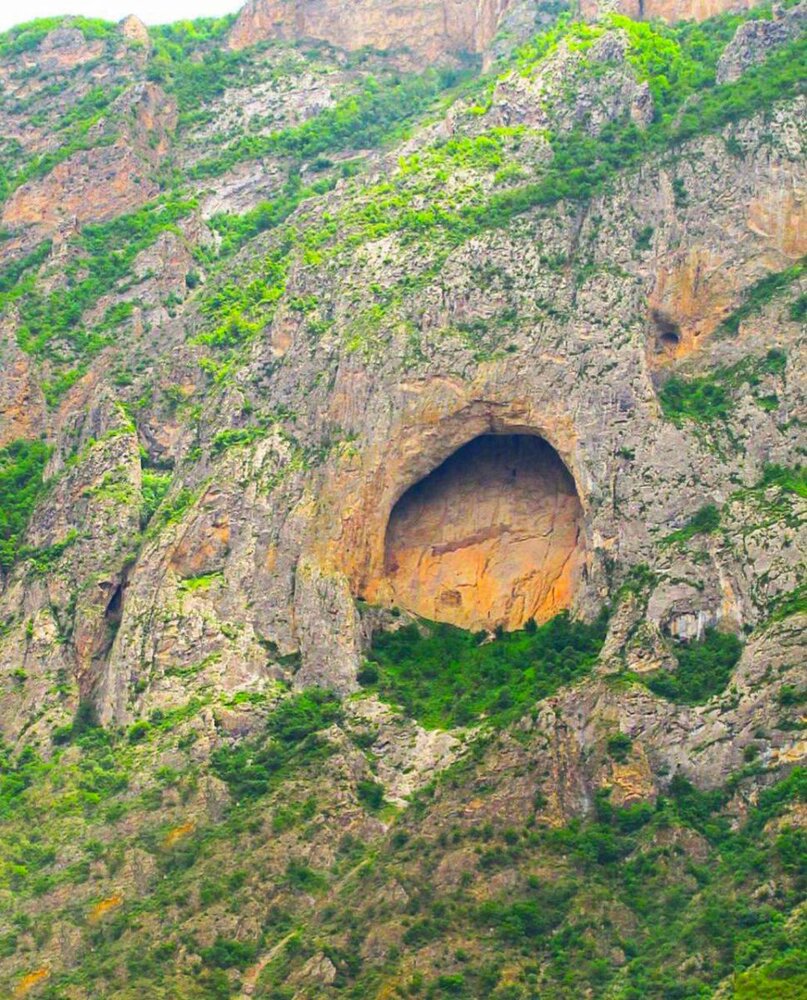Discover how pinnacle of art, genius of ancient architects turned natural arch into full-fledged stronghold

TEHRAN – A good amalgam of natural landscape and human genius has created what modern visitors witness at Sepahbod Khorshid Cave, which was once a unique defensive architecture during the Sassanid era (224–651 CE).
Situated on Savad Kooh highlands, northern Mazandaran province, the cave was used as a shelter by Khorshid (“The sun”), the last ruler of Tabarestan, then surrounded by Arab invaders for several months and seized after poisoning its drinking water supply. Some consider this cave as the latest Persian stronghold against the Arab conquerors. Access to the cave needs climbing gear and also expertise in alpinism.
Measuring 80 by 100 meters, its arched entrance is said to be the largest natural one in the world. On the left side of the cave, a four-story-high castle was built; made of stones and mortar, it is the masterpiece of architecture of its time. On the right side, numerous trenches and defensive buildings were built, all of which remained firm and intact after centuries.
These two parts were connected through a road made of stones and mortar. Two meters wide, this road was built 50 meters above ground level. Today only traces of it remain. The remains of a cistern, several silos, and numerous defensive monuments are located outside the cave.
According to Saman Towfiq, the head of archeological studies on the cave, the structure is the pinnacle of art and genius of the Iranian architects who have turned a natural arch into a full-fledged stronghold.
Towfiq believes that it was the most specific stronghold in terms of form, dimensions, and historical age and was the most important military stronghold throughout the entire history of Iran, the last shelter and the hidden symbol of Iranian resistance against the Arabs and the remotest corner of Iran which deceitfully collapsed after two centuries of the fall of Nahavand and the central government.
According to the archaeologist, the spatial strategic position of the stronghold, its strength, and specific architectural structure made it an unattainable refuge for Tabarestan commanders.
Describing the structure of the cave, Towfiq referred to its outer structure, the royal seat, the middle part, and the arg (citadel) and said in this establishment maximum advantage has been taken from the minimum possibilities.
AFM/MG
Leave a Comment